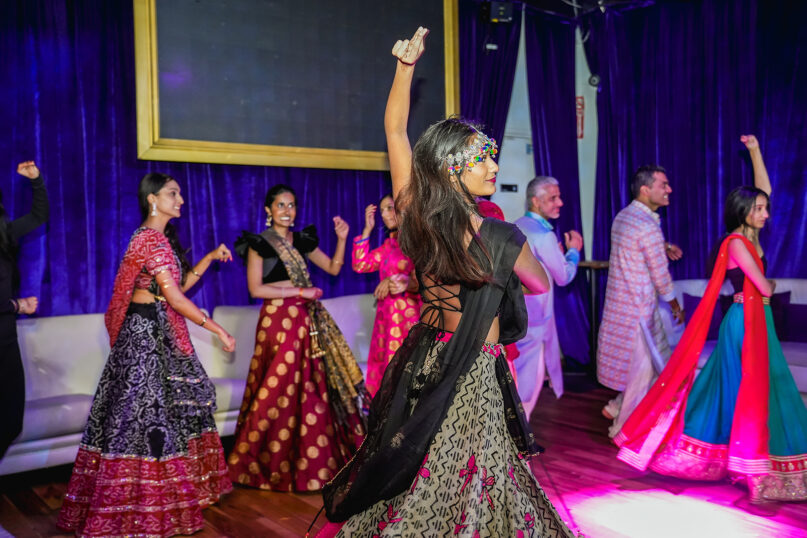(RNS) — The garba, a folk dance from western India once performed by women at home to celebrate the Hindu goddess Durga, has improbably inspired Bollywood-sized performances at social gatherings and competitions in the United States.
The garba originated in Gujarat, the state along India’s western coast, as part of celebrations of the holiday of Dussehra that marks the end of Navaratri, a nine-day festival of devotion to the Hindu goddess Durga that ends Tuesday (Oct. 24).
Honoring the divine feminine energy of Durga and her incarnations, the garba, whose name comes from the Sanskrit word for womb, has been danced by thousands of colorfully dressed South Asians across New York and New Jersey over the past nine days. It is often danced on college campuses and at local community centers until long after midnight.
Many of those dancing will be non-Hindus, as second-generation Hindu Americans have hosted garba events that emphasize the dance’s fostering of community.
At Maria Hernandez Park in Brooklyn, New York, on Sunday, professional dancer Alisha Desai, whose father is Gujarati, welcomed passersby to take part in a garba performance and workshop in collaboration with the Brooklyn Arts Council.
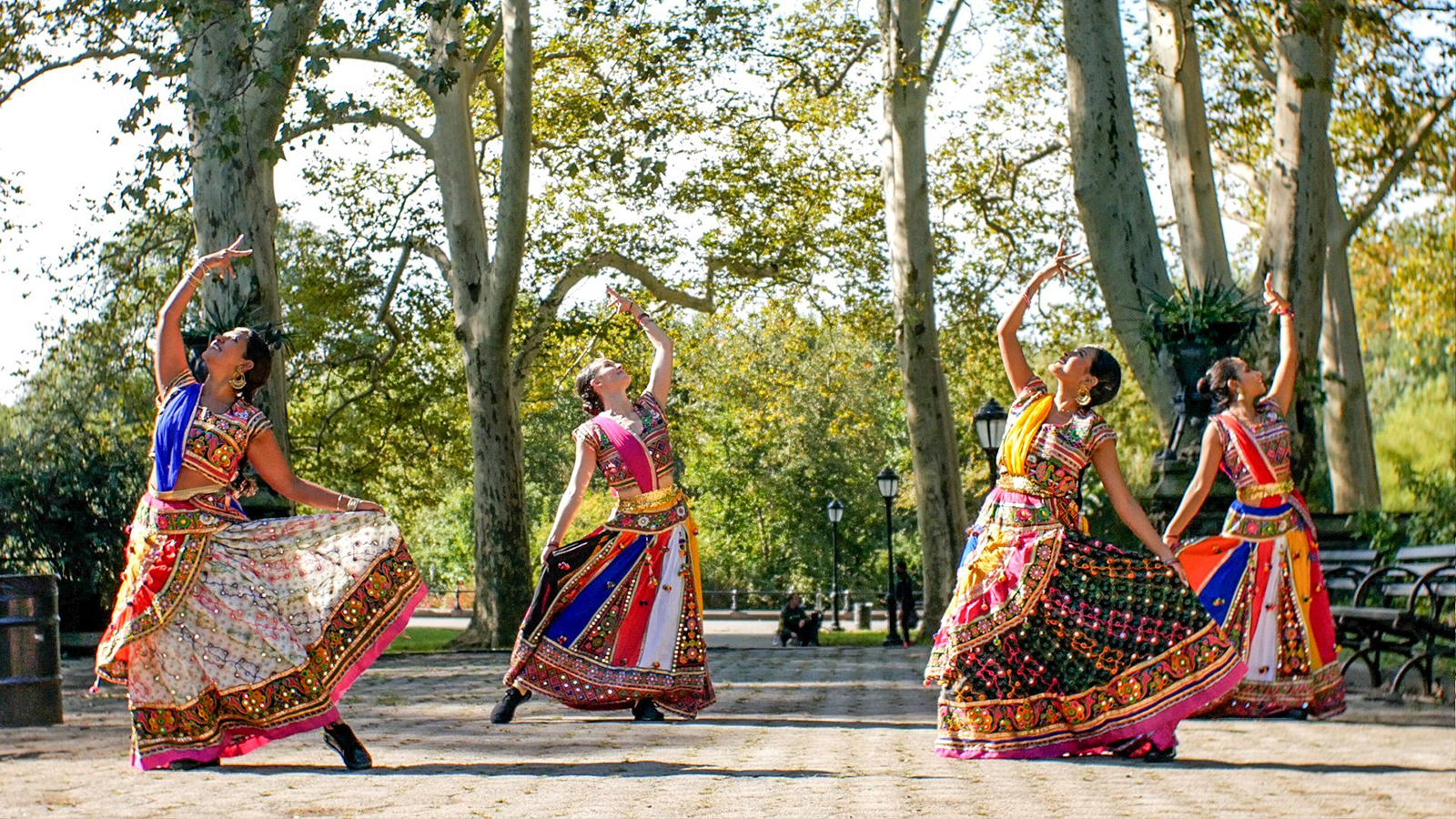
Alisha Desai, left, performs alongside other dancers. Photo courtesy of Alisha Desai
“I wanted everyone to feel comfortable,” said Desai. “If you are Hindu, I wanted you to have a good time and practice your beliefs with everybody. But I wanted anyone who maybe doesn’t even know who Durga is to feel comfortable enough to join in and celebrate.”
Describing herself as spiritual, not religious, Desai said the art form has been vital in connecting her to her own heritage. Desai studied classical Indian dance in India for a year while in college, where she was inspired to bring a taste of large-scale garba back to her own community in Brooklyn.
“Art and dance are spiritual acts,” said Desai. “It is a way to connect to the oneness and everybody, and a higher power. That’s kind of my meditation, and my way of grounding myself.”
Pankti Doshi, a Gujarati American from the Bay Area, said the communal nature of the dance led her to co-found the event planning group and/aur, which hosts meetups and parties for South Asian American New Yorkers looking for a way to connect with their culture.
“I was constantly surrounded by South Asian people,” said Doshi. “I had this feeling instilled in me that: I am South Asian, I am Indian, and I’m so excited to be a part of this community.”
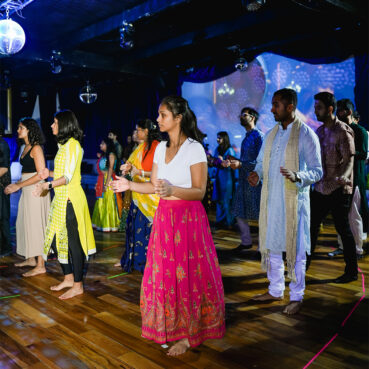
People dance during the Dandiya Drop garba in New York City. Photo by Misha Patel
Her group’s unique garba was called Dandiya Drop: a pop-up event for adults, complete with drinks and dance influencers, specifically pitched toward the children of immigrants like her, who have a unique American experience, she said. (A dandiya, or dandiya raas, is a variation of the garba, in which sticks are slapped together.)
“Garba is really an experience where people are gathered to build that sense of belonging, where they’re sharing a new culture, a new dance and a sense of contagious energy,” she said. “There’s this underlying feeling that we’re creating a sense of home in such a large city.”
According to Shana Sippy, an associate professor of religion and chair of Asian studies at Centre College in Kentucky, the traditions of Hinduism, diverse as they are, readily adapt to the local context. Garba, as it has migrated out of Gujarat, has transitioned from a domestic folk dance to become “a way to represent your culture and your tradition,” said Sippy. “Not only are you embodying your culture by dancing, but you are representing it to others.”
Navaratri celebrations don’t end with garba. In south India, women of the house put together golus, or tiered altars of dolls and items depicting events in Hindu mythology. Bengali people celebrate Dussehra with a large-scale Durga puja, or ritual.
The first time Vasudha Narayanan, a Hindu scholar at the University of Florida, participated in a garba was when she came to America from southern India in the 1980s. But for years since, she has hosted a golu open house.
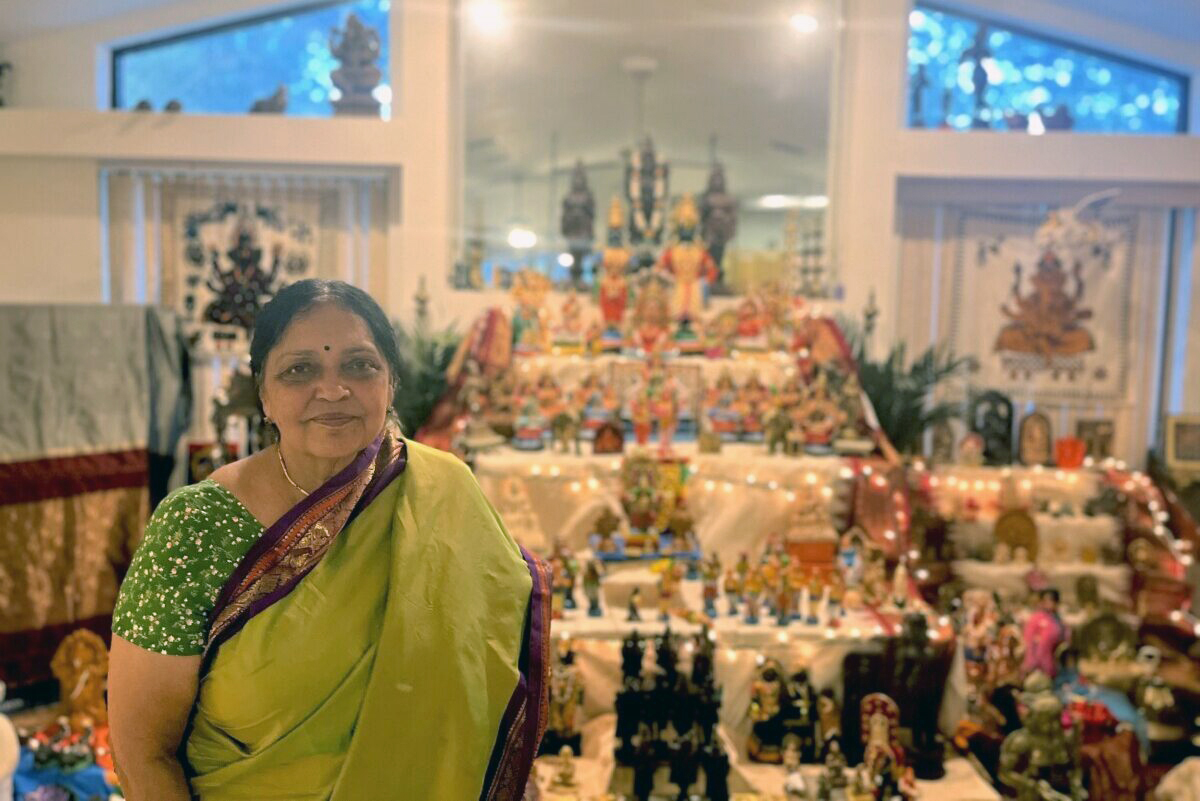
Vasudha Narayanan poses in front of her golu, a tiered Hindu altar. Photo courtesy of Vasudha Narayanan
The United States, Narayanan said, lends itself to pan-Hindu celebrations, where immigrants and their first-generation offspring can share the nuances of local traditions their families left behind.
“It is the transmission of culture through music and dance, both horizontally — communicating it to Hindus from other parts of India — as well as vertically, to the next generation,” said Narayanan. “That kind of transmission helps us understand the diversity of Hinduism and that it’s not a single way of celebration or belief.”
Anu Sehgal founded the Culture Tree in New York with the intention of teaching South Asian language classes to kids in the diaspora. But since its start, the school has become a hallmark of Indian cultural programming geared toward children, from puppet shows to museum exhibits.
While her goal is to keep religion out of her educational programs, Sehgal doesn’t shy from introducing Navaratri traditions to children with its cultural history, including the widely known story of Durga’s victory over the demon Mahisha.
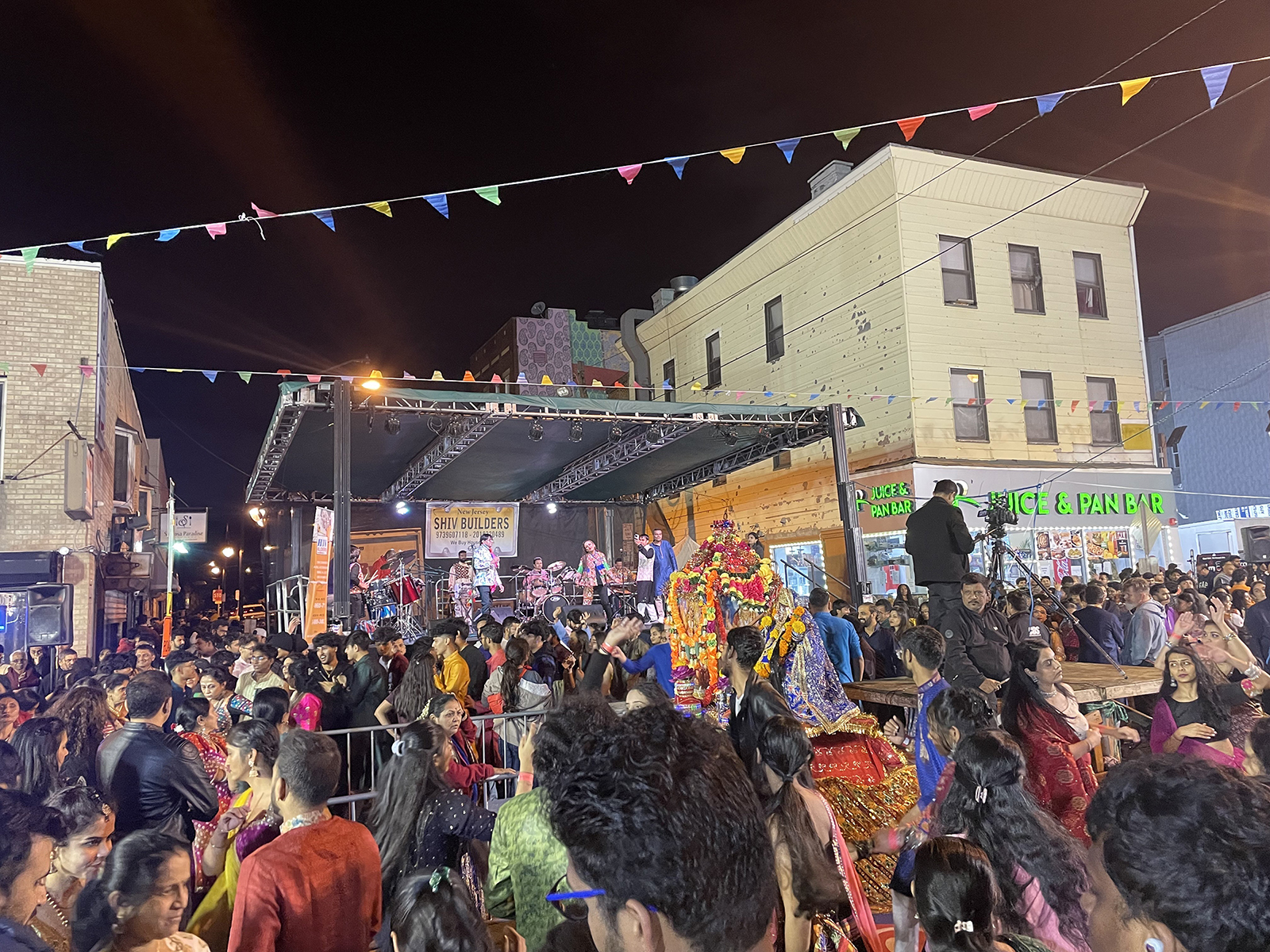
People attend Navaratri festival celebrations in India Square in Jersey City, New Jersey, Oct. 21, 2023. RNS photo by Richa Karmarkar
“There is such a huge benefit of celebrating festivals for these children, for including their heritage, their culture, their languages in everyday life,” said Sehgal. “Our kids will learn about their heritage, customs and community through all of these celebrations. All while having fun!”
Her organization’s garba event at New York’s Waterline Park brought together thousands of South Asians, Hindus and people of other faiths, for a family-friendly evening, including two dance circles: one for seasoned experts and one for kids.
Even as South Asians of all faiths have come to enjoy garba, so too have college students of any faith and none: On campuses across the U.S., competitions have sprung up that go all year long. In April, the University of Texas’ Dirty South Dandiya won the 15th annual Raas All-Stars National Championship in Chicago.
“Garba is not just about feminine power, but it’s also about bringing people together,” said Sehgal. “People were in sync with each other, they were looking at each other, following each other’s cues. Everyone has to dance in unison. How powerful is that?”
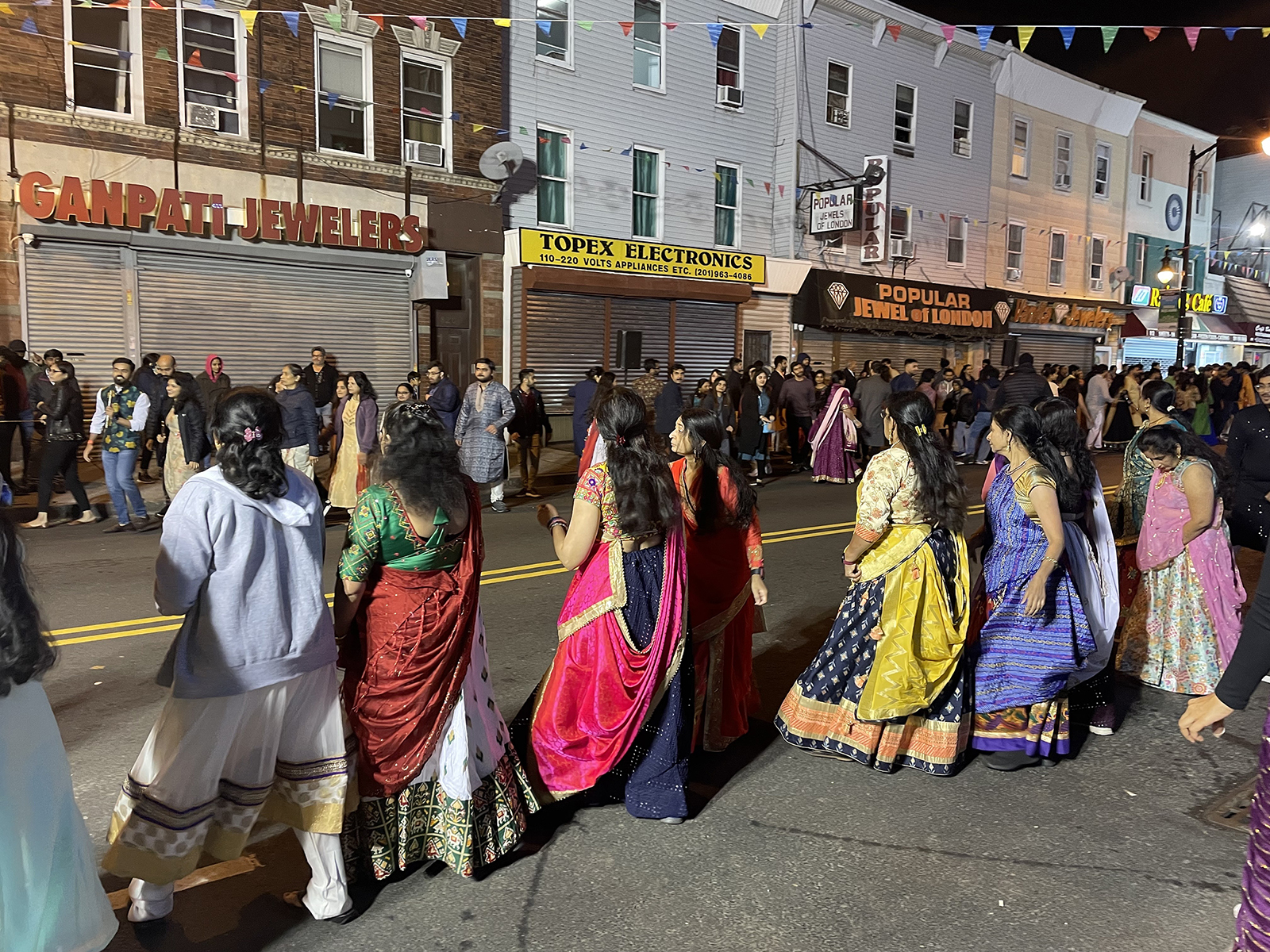
People participate in a garba dance during Navaratri festival celebrations in India Square in Jersey City, New Jersey, Oct. 21, 2023. RNS photo by Richa Karmarkar
